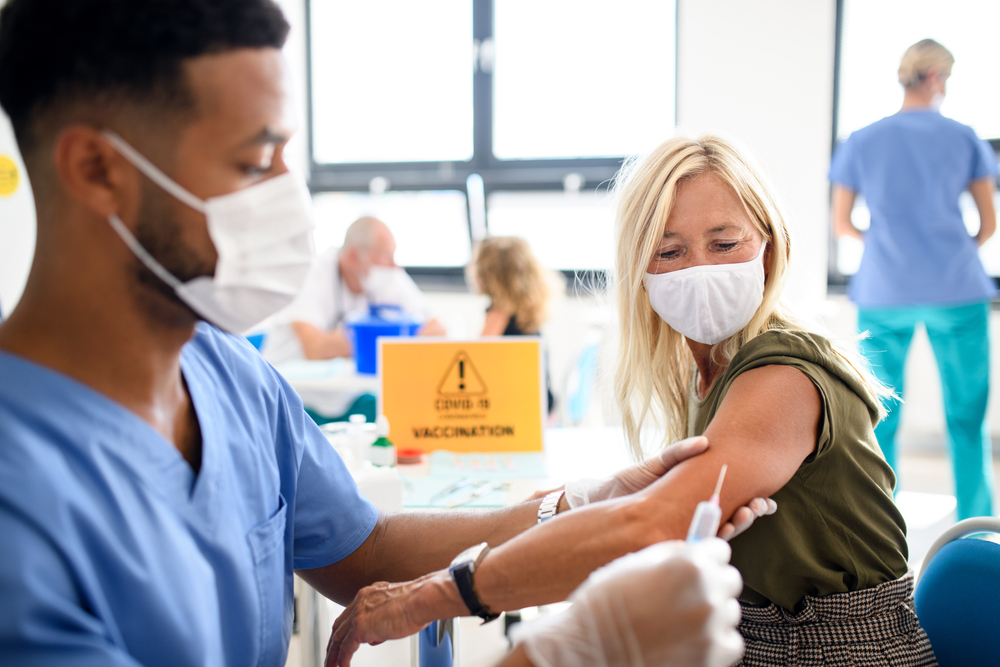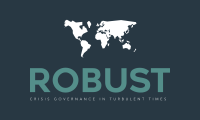In our project, we have gathered examples of robust governance across three themes: the Covid-19 crisis, the Refugee Crisis, and the Financial Crisis. Take a look at our examples on the tabs below.
Like other EU countries, Belgium also employed school closure among its crisis management measures. However, it was clear quite early on that learning loss, increased rates of child abuse, and difficulties for teachers and parents were all direct consequences of this decision. Thus, the Flemish region Education Minister consulted diverse actors in an ad-hoc group, fostering knowledge exchange on this topic.
This led to the adaptation of measures and a very limited number of days when schools were fully closed in the region, which can be considered a success.
The success of the vaccination strategy in Belgium, and specifically in Flanders, was dependent on tackling vaccine hesitancy. The role played by intermediaries in the region, such as pharmacists, primary healthcare providers, and social workers turned out to be very impactful. Relying on local networks and knowledge, these actors could support both prevention and the vaccination strategy by managing information processing and innovating in their reach strategies in their neighborhoods.
During the COVID-19 pandemic, Estonia used a series of strict societal lockdowns, including school closures. School closures went through two phases of governance: In the first wave, the Government used advice from scientists and information about the spread of the virus to enforce state-wide school closures. However, in the second wave in the fall of 2021, decision-making was left to the discretion of schools and municipalities, who were mandated to work together with the Health Board to decide on any school closures. Varied sources of knowledge were used to make decisions regarding school closures, and multi-level governance between different organisations and levels helped with the adaptation to distance learning.
School closures during the Covid-19 pandemic sent shockwaves with lasting consequences to children and their families globally. However, children facing multiple disadvantages encountered a wider range and more severe forms of challenges, such as those faced by Roma children in a socio-economically disadvantaged village in Eastern Hungary. To address their support needs, local responses were crucial and often more effective than centrally provided assistance. These responses, relying on the collaboration of the local stakeholders such as the local branch of an NGO specializing in assisting Roma children and the field office of the Family Support Service – sometimes emerged not because of, but in spite of national policies. Second, compared to pre-pandemic practices, front-line services’ internal communication and decision making practices changed surprisingly little during the pandemic, and showed minimal adaptation and learning in the post-pandemic period, too.
During the COVID-19 pandemic, schools in Czechia faced multiple closures. The decisions to close schools were made centrally and somewhat chaotically, and the country experienced one of the lengthiest periods of online education, lasting around 150 days. The response from schools varied across Czechia, influenced mainly by the decisions of school directors, their collaboration with municipalities, and the available resources for teachers and students, including their access to computers and mobiles. During the initial wave of the pandemic, school principals played a crucial role. Subsequently, new guidelines and frameworks were approved at the central level to learn from experiences during the first wave and better prepare for future waves.
After being a frontrunner in vaccination rates in Europe in early 2021, the mass vaccination campaign in Estonia slowed down in late spring of 2021. To increase vaccination rates, a special vaccination organisation working group was created by the Ministry of Social Affairs, consisting of public servants from the ministry and public health agencies as well as representatives of general practitioners and doctors. The working group was tasked with coordinating mass vaccination in the summer of 2021. To achieve this, the working group collaborated with multiple different stakeholders and developed a series of innovative instruments to make vaccination accessible and encourage as many citizens as possible to vaccinate against COVID-19. The working group format enabled stakeholders to frequently share information and divide work, tightening collaboration between organizations and allowing for a more swift and flexible approach to the vaccination coordination.
When the COVID-19 pandemic emerged in early 2020, governments faced a lot of uncertainty. To combat this, the Estonian Government created a Scientific Advisory Board (SAB), consisting of experts and scientists in fields such as in virology, microbiology, and psychology. The goal of the Scientific Advisory Board was to gather scientific information about COVID-19 and provide prognoses for the government. This specific board was created to coordinate expert advice and prevent a situation where each member of the Government as well as the media would have a separate expert, leading to contradictory advice and duplication of knowledge exchange. The board played a major role in the decision-making processes during the pandemic, advising the Government on crisis responses, based on scientifically backed data. The creation the Scientific Advisory Board was noted as a big success by several stakeholders, providing both political decision makers as well as the public with constant knowledge on the developments of the virus.
Hungary’s national version of the EU’s Covid Certificate, the ‘Immunity Card’, enabled the government to set incentives and sanctions in response to the changing situation during the pandemic. The government also led centralized organization and logistics of the vaccination process, and had diverse vaccine supply channels from Chinese, Russian, and Western producers, with citizens able to choose their vaccine. This led to Hungary surpassing the vaccination rates of nearly all newer Eastern EU member states, but not older member states. As for excess mortality, Hungary’s pandemic response appears to be around the EU average, leading to a generally satisfactory overall evaluation.
Faced with uncertainty in the early stages of the pandemic, a Norwegian municipality set up a COVID center that consolidated key functions such as testing, contact tracing and public information via a hotline. Importantly, by hiring and training a flexible work force capable of filling roles within all the three key functions, the COVID-center was designed with flexible adaption and scalability in mind, allowing later modularity and bricolage. This allowed the COVID-Center to constantly adapt as demands for the different functions fluctuated throughout the evolving pandemic.

The 2015 refugee crisis mobilized all stakeholders and organizations connected to the migration system in Estonia. Dealing with an influx of refugees required joint efforts from all relevant parties. Collaboration and coordination between different stakeholders became the most important aspect of dealing with the pressures of the refugee policy on the Estonian migration system. Meetings were arranged both between the central government and municipalities as well as with civic organizations. In the fall of 2015, the Ministry of the Interior and Ministry of the Social Affairs conducted monthly meetings with agencies and relevant NGOs to discuss any issues and exchange information about the process. Multi-level crisis governance and collaboration helped address the gaps and lack of capacities within the system, make adaptations, and lead to a common effort to avoid an acute crisis.
Norwegian settlement policy aims to settle refugees in all parts of the country, in both large and small municipalities. IMDi (The Directorate of Integration and Diversity) decides where the individual refugee is offered a place to live. This report is based on qualitative interviews with seven employees in the refugee service in a municipal in the central southern part of Norway. We describe this case municipality as subject to multiple stressors based on its location being so that it receives first wave of refugees, new laws and regulations implemented, merger with two smaller municipalities into one large as well as mergers and structural changes to refugee service within the now larger municipality. We find that the municipality has implemented many measures as a consequence of the Ukrainian war, for instance established a crisis team, structural changes, efficiency changes and collaboration with volunteer organizations.

Financial Crisis in Estonia
During the 2008 financial crisis, Estonia was hit with a rapid economic decline. Most remarkably, the GDP fell by 14.3% in 2009 and the fiscal balance dropped from a surplus of 2.5% of the GDP in 2007 to a deficit of 2.8% by 2008.
Standing out to most other countries, Estonia responded to the crisis with a series of fiscal retracements. When the crisis emerged in Estonia in late 2007 to early 2008, the political decision-makers saw the reactive fiscal measures as an opportunity to fulfil the EU Maastricht criteria to qualify for the adoption of the euro. For this, public deficit must have been under 3% of the GDP and Governmental dept must have been under 60%. Because the Maastricht criteria applies to the entire general Government, including municipalities, the central Government enforced centralized measures to ensure that local municipalities would not exceed the deficit, restricting borrowing.
A centralized approach by the central Government to establish strict austerity measures allowed the Government to fulfil its political and economic goals, but negatively impacted the state of municipal autonomy. Therefore, this case serves more the purpose of illustrating an example of a non-robust crisis response.

